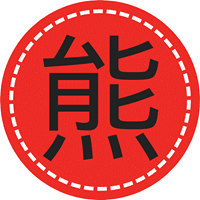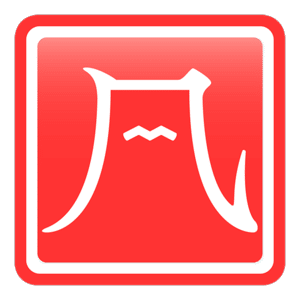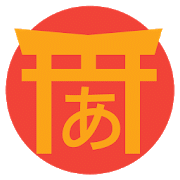
14 Hiragana Practice Resources for Japanese Beginner Students (Plus a Hiragana Quiz)
Hiragana is essential to your Japanese education.
If you want to learn Japanese fast, committing these basic characters to memory will make your language learning journey much more efficient.
And the best way to learn hiragana characters is to practice, practice, practice!
Here are 14 splendid resources that will get you the practice you need to know your hiragana characters like the back of your 手 (て) — hand. I know they work well because I personally used all of these at some point when I was learning Japanese.
But first, take our quiz to test our your hiragana knowledge now.
Contents
- Hiragana Quiz
- Top Resources for Japanese Hiragana Practice
- 1. Hiragana Quiz
- 2. FluentU
- 3. Dr Lingua “Drag and Drop”
- 4. Tanoshii Japanese
- 5. Kuma Sensei
- 6. Genki
- 7. Japanese-Lesson.com
- 8. Tae Kim’s Guide to Learning Japanese
- 9. “Learning Japanese Hiragana and Katakana”
- 10. Kana Town
- 11. Tofugu’s Learn Kana Quiz
- 12. Real Kana
- 13. Usagi-Chan’s Genki Resource Page
- 14. Gyford Hiragana and Katakana Quiz
- An Introduction to Japanese Writing Systems
- Why Learn Hiragana?
Download: This blog post is available as a convenient and portable PDF that you can take anywhere. Click here to get a copy. (Download)
Hiragana Quiz
Choose the correct English syllable to match each hiragana character.
Top Resources for Japanese Hiragana Practice
1. Hiragana Quiz
Hiragana Quiz is a simple, no-frills quiz that’s easy to use. That’s why I use it all the time.
The quiz works by showing you a character. Then, you simply type in the equivalent pronunciation in rōmaji and click “correct me.”
The quiz features both hiragana and katakana but tracks your scores for each separately, making it easy to see how strong you are with either type of character. If you see a katakana character and do not even want to try, you can also click “next” to skip over it.
2. FluentU
FluentU is an immersive language-learning program that lets you practice and learn Japanese hiragana by watching authentic Japanese videos.
It naturally and gradually eases you into learning Japanese language and culture. You’ll learn real Japanese as it’s spoken in real life.
Just take a look at the wide variety of authentic video content available in the program. Here’s a small sample:

You’ll discover tons of new Japanese vocabulary through these great clips.
Don’t worry about your skill level being an issue when it comes to understanding the language. FluentU makes native Japanese videos approachable through interactive transcripts.

Tap on any word to look it up instantly.
You’ll see definitions, in-context usage examples and helpful illustrations. Simply tap “add” to send interesting vocabulary words to your personal vocab list for later review.

FluentU even uses a learning program which adapts to your specific needs to turn every video into a language learning lesson and get you to actively practice your newly-learned language skills.

Start using the FluentU website on your computer or tablet or, better yet, download the FluentU app from the iTunes or Google Play store. Click here to take advantage of our current sale! (Expires at the end of this month.)
3. Dr Lingua “Drag and Drop”
If you prefer your hiragana practice gamified, check out this interactive site.
In this game, you drag the hiragana characters onto their equivalent rōmaji pronunciations.
As you play, a timer runs. Although this can create a fairly high-pressure situation, you can use the timer to work on faster recognition. Simply make a note of your time in the game. Then, the next time you play, aim to complete the game a little quicker.
The more you play, the faster you will get—which means your character recognition is improving!
4. Tanoshii Japanese
Regardless of whether you are studying hiragana, katakana or kanji, Tanoshii Japanese has a fun game to help you practice. I use it all the time.
But let’s jump straight to the good stuff: the hiragana games.
You can choose either “multi-game” or “single-game.” “Multi-game” allows you to select multiple types of practice and progress through several games in one sitting, while “single-game” presents you with just one type of game at a time.
There are a few different styles of practice available. Your options include character recognition and matching, stroke order and English or Japanese flashcards.
If you are feeling ambitious, “multi-game” lets you select every category and play through them all.
You can also choose which lessons (from a set list) you want to practice and how long you want the game to be.
5. Kuma Sensei
Kuma Sensei offers hiragana flashcards and exercises. Why not give both a try for some well-rounded practice?
The flashcards display images of hiragana characters. Whenever you want to see the equivalent rōmaji, just click to flip the card.
The exercises ask you to convert hiragana into rōmaji and vice versa. This is a helpful way to practice transitioning between the two.
6. Genki
Technically, this website contains support materials for the Genki textbooks. However, that does not mean you cannot use it to augment your learning, too!
Genki offers a nice assortment of material to help you practice hiragana.
One option is an interactive hiragana character chart. You can click any character to access an animation of proper stroke order, an audio pronunciation and even a little movie that will make the character easier to remember.
There are also “flashcards” that act more like a quiz: Each flashcard asks you to list the rōmaji for the hiragana character you are presented with.
There is even a listening quiz to help you connect hiragana with their sounds.
Finally, a fun concentration game has you find and pair matching hiragana together.
7. Japanese-Lesson.com
Japanese-Lesson.com has helpful practice for something you may not have fully worked on: writing hiragana by hand, which was one of the hardest skills for me to acquire personally.
Printable practice sheets show you the stroke order.
Then, all you have to do is imitate that stroke order to form hiragana characters and repeat until it comes naturally to you.
8. Tae Kim’s Guide to Learning Japanese
Tae Kim’s Guide to Learning Japanese offers four different practice activities to get your hiragana skills on point.
The first is an easy flip chart of rōmaji letters. Click on any pairing to see the equivalent hiragana character.
The next two exercises are writing activities in which you are asked to convert rōmaji to the corresponding hiragana.
The final activity is reading practice. You will read characters in hiragana and turn them back into rōmaji for a well-rounded learning experience.
9. “Learning Japanese Hiragana and Katakana”
This workbook and self-study guide can be your go-to source for all your kana needs.
That’s because it provides a lot of information between its two covers: some background about the characters, learning reviews, practice activities and self-testing opportunities.
Plus, there is even some downloadable audio for the book available on the publisher’s website.
10. Kana Town
Available: Android
On-the-go hiragana practice? Yes, please!
The Kana Town app allows you to practice your hiragana anywhere.
The app offers a chart to help you study the connection between hiragana and the associated rōmaji characters. Practice activities reinforce your learning.
Feeling ambitious? The program even allows you to start learning some basic vocabulary.
11. Tofugu’s Learn Kana Quiz
Just like what it sounds like, Tofugu’s site is a well designed place to practice kana—both katakana and hiragana. I use this one all the time to boost my memory.
You can both practice and quiz yourself here, and they’ve included excellent categories, including main kana, Dakuten kana and combination kana, so you’ll have a grasp of all of these if you use the site often, which I recommend you do.
12. Real Kana

Available: iOS
Real Kana is both a website and an app, so you can study at home and on-the-go, which is a great way to memorize all those pesky characters.
Both forms provide interactive quizzes and drills, aiding learners in recognizing and writing characters accurately. The platform offers customizable exercises, allowing users to focus on specific characters or combinations. Real Kana’s clean interface and responsive design make it accessible across devices.
It’s a free resource that serves as an excellent supplement to formal language learning, enhancing proficiency in reading and writing Japanese script.
13. Usagi-Chan’s Genki Resource Page

Usagi-Chan’s Genki Resource Page is a comprehensive online hub for learners of the Japanese language using the popular Genki textbook series.
It offers a wealth of supplementary materials, including grammar explanations, vocabulary lists and interactive exercises.
The site’s user-friendly layout and clear instructions make it an invaluable companion for self-study. It also provides audio resources for pronunciation practice and cultural insights.
14. Gyford Hiragana and Katakana Quiz
The Gyford Hiragana and Katakana Quiz is a fantastic online tool for mastering the fundamental Japanese scripts.
It offers interactive quizzes and exercises specifically tailored to hiragana and katakana characters. With customizable options, learners can focus on specific sets or difficulty levels. The quizzes are intuitive and user-friendly, providing instant feedback to reinforce learning.
The platform’s straightforward design makes it accessible to beginners and advanced learners alike. Gyford’s quiz is a valuable resource for honing kana proficiency, aiding in the journey towards Japanese language mastery.
An Introduction to Japanese Writing Systems
If you are just starting out with your Japanese education, it is important to note that there are four main types of Japanese character: kanji, hiragana, katakana and rōmaji.
Rōmaji is simply the use of Latin script to write the Japanese language.
Kanji are characters of Chinese origin that form the central base of many words.
Katakana is usually used to write foreign words, onomatopoeia or to emphasize something.
Hiragana is used to modify kanji, to alter the grammar of a word or sentence, to form entire words and particles and to allow younger or less experienced Japanese speakers to read kanji.
Hiragana and katakana are both comprised of phonetic characters, which means that each character represents a sound. Together, they are called kana.
Why Learn Hiragana?
If there are four different types of characters in Japanese, why focus on hiragana?
Well, if you are reading this, you already know how to read rōmaji. Kanji is complex, and it requires years of study to memorize the many characters needed for literacy. Katakana is not used nearly as often as it mostly represents foreign or borrowed words.
That just leaves hiragana!
Besides this simple process of elimination, there are many reasons to study hiragana.
Hiragana appears more frequently than other types of characters. It is right up there with kanji in frequency of use.
Since hiragana can modify kanji and serve as the grammatical structure that holds a sentence together, you will see hiragana constantly.
Even easy Japanese words and phrases use it, so it is a good idea to learn hiragana right from the beginning.
Hiragana is phonetic. This means you can look at the characters and know exactly how they are pronounced.
Hiragana is also a good starter for learning more Japanese characters. Eventually, you will want to learn hiragana and katakana along with your kanji. But for beginning students, learning hiragana is a less daunting way to start learning Japanese characters.
It can even be used to clarify how to pronounce more complex kanji, making it a useful tool for Japanese self study.
So go ahead and get your hiragana on. These 14 splendid sources will give you the practice you need to read and speak better, and you’ll do better on your next hiragana quiz, too.
Download: This blog post is available as a convenient and portable PDF that you can take anywhere. Click here to get a copy. (Download)









